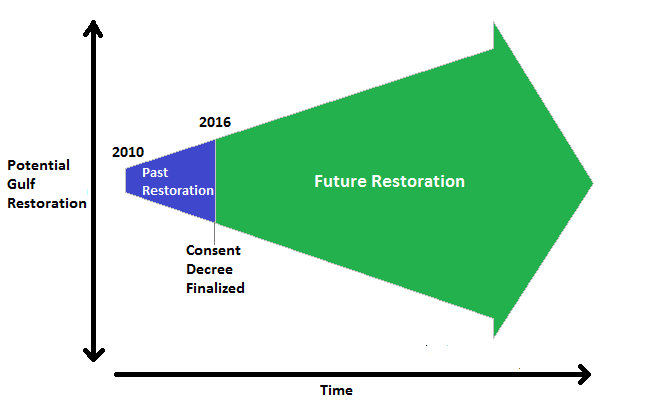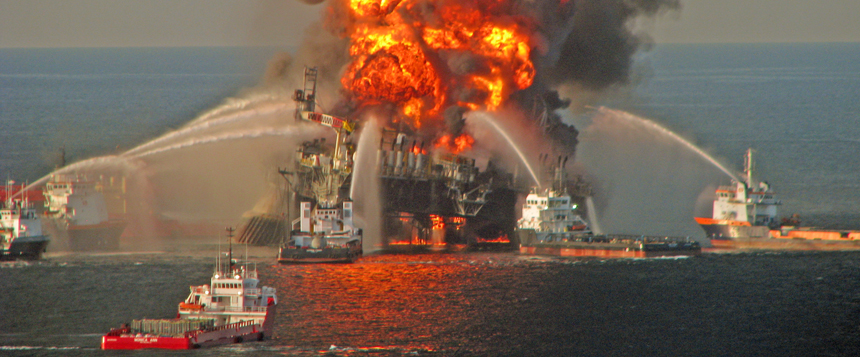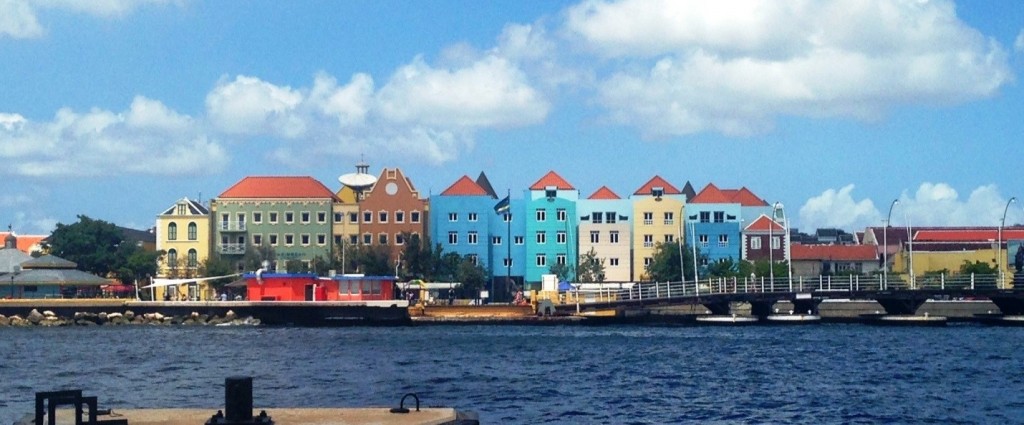
Welcome to the Ocean Program’s blog, Ocean Talk! Ocean Talk is a tool to share salient issues, perspectives, and resources. We hope the entries will spur ideas and expand the ocean dialogue—and we’re always around to join.
Read our Intro message here, and click on a post you’re interested in to jump directly to that entry:
2021 Entries
Navigating the Public Comment Process for the Mid-Barataria Sediment Diversion Project (April 2021)
Deepwater Horizon Aftermath: Chronic Medical Conditions Still At Issue in Federal Courts (March 2021)
Sediment Diversions: Big Projects Confront Land Loss in the Mississippi River Delta (January 2021)
2020 Entries
Gulf of Mexico Coastal Restoration Efforts: Fundamental or Fleeting (November 2020)
Still Much We Do Not Know: Climate Uncertainty and Adaptive Management in the Gulf of Mexico (September 2020)
Public Participation at a Distance: Engaging in Gulf Restoration Processes During the Pandemic (July 2020)
COVID-19 and Gulf Resiliency (May 2020)
Environmental Review in the Gulf: How Might Revised NEPA Regulations Impact Coastal Restoration? (February 2020)
2019 Entries
Lessons from Davis Pond – A Case Study in Adaptive Management (December 2019)
Bouncing Back from Bonne Carré: What Is Next for Impacted Fisheries? (October 2019)
Lifting up Gulf Voices: A Snapshot of Gulfport, MS Resident and Community Advocate Alanderia Whitlock (January 2019)
2018 Entries
-
Meeting Mississippi: MDEQ Restoration Summit and ELI’s Listening Tour (November 2018)
-
Mississippi Meetup: ELI in the Gulf (July 2018)
-
Fishing for Opportunity: A Perspective on Vietnamese Engagement in Gulf Restoration (May 2018)
-
Pearls of Wisdom from a Mississippi Fisherman (Why I Participate in Gulf Restoration Blog Series)
2017 Entries
2016 Entries
-
Charting the Course: A Survey on Public Engagement in the Natural Resource Damage Assessment Process
-
RESTORE Draft Comprehensive Plan Update: What It Is, What It Does, and Uncertainties
-
What is a “Good” Project? Breaking Down Our Survey on Gulf Restoration Priorities
-
BP Consent Decree Finalized:Where it Leaves Gulf Restoration 6 Years After the Spill
-
Greater than the Sum of Its Parts: Coordination and Leveraging in Gulf Restoration
2015 Entries
-
Deepwater Horizon: Four Years Later;
Greater than the Sum of its Parts
Coordination and Leveraging in Gulf Restoration
ELI Gulf Team, February 24, 2016
Now that the proposed consent decree among the United States, five Gulf states, and BP has been released, there is greater certainty about the amount of funding that will flow to the Gulf for restoration and recovery efforts. We now know that, if the settlement with BP is finalized, up to $16.67 billion will be available through the three main processes – the natural resource damage assessment process, RESTORE Act funding, and National Fish and Wildlife Foundation (NFWF) grants. Of that amount, only about $1.57 billion has been obligated to projects. That means that there is much more money left to be spent.

Over the coming years and decades, there is a massive opportunity to achieve Gulf restoration objectives. However, given the numerous challenges facing the Gulf, even this money is unlikely to address all of the Gulf’s needs. How do we ensure that the money coming into the Gulf goes as far as possible? READ MORE…
BP Proposed Consent Decree Released
Details of the Settlement and How You Can Participate
ELI Gulf Team, October 13, 2015
On October 5, 2015, a historic milestone was reached in Gulf restoration: the terms to settle the United States’ and five Gulf states’ remaining claims against BP were announced. Along with separate agreements with local government entities, these settlements total $20.8 billion. This amount includes…READ MORE HERE
RESTORE Council Draft Initial Funded Priorities List
Charting a Course for Gulf Restoration Activities
ELI Gulf Team, August 18, 2015
On August 13, 2015, another important milestone in Gulf restoration was reached: the Gulf Coast Ecosystem Restoration Council released its draft Initial Funded Priorities List (“Draft FPL”). The Draft FPL proposes approximately $139.6 million worth of projects and programs, which will be funded with monies from the Transocean settlement, about $240 million of which were allocated to the Council (note that the much larger settlement with BP is not yet final, so the Council has yet to receive any of that funding).
In considering this milestone, we focus on a few key questions…READ MORE HERE
Deepwater Horizon Settlement
Some Answers, New Questions
By ELI Gulf Team, July 7, 2015 (last updated July 8, 2015)

On July 2, 2015, a monumental announcement was made: an agreement in principle has been reached to settle all federal and state claims against BP arising from the Deepwater Horizon oil spill for $18.732 billion (see BP’s press release here). This amount includes:
While we are still waiting on the exact details of the settlement, we do know some of the terms. We will focus on the natural resource damages and Clean Water Act civil penalties (specifically the RESTORE Act) here…READ MORE HERENRDA Early Restoration Breakdown
Posted by ELI Gulf Team, Updated June 2, 2015

On May 20, 2015, the Deepwater Horizon trustees released a draft plan for a fourth phase of early restoration, which proposed 10 projects costing around $134 million. With this recent announcement, now is a good time to review where the money has been spent so far and how the fourth round fits into the broader early restoration picture. First, we need to review some background.
Background
As a refresher, a Natural Resource Damage Assessment (NRDA) is a process focused on restoring natural resources injured by an oil spill. In a typical NRDA, the trustees assess injuries to natural resources and then come up with a restoration plan to address those injuries. Restoration projects begin once the assessment is complete. Here, however, BP agreed to provide up to $1 billion so that certain restoration projects could be started before the assessment is finished.
Three phases of projects worth about $700 million have been finalized so far (and, if the fourth round of projects is approved, the total will reach approximately $832 million of the $1 billion). The first phase included eight projects (worth approximately $62 million), the second phase included two projects (worth approximately $9 million), and the third phase included 44 projects (worth approximately $627 million). So, how has this money been spent?…READ MORE HERE
Remembrance of Tragedy, Processes for Healing
Deepwater Horizon, Five Years Later
ELI Gulf Team, April 20, 2015
It was five years ago today that a blowout rocked the Deepwater Horizon oil rig, leading to one of the worst oil spills in the nation’s history. Healing from a disaster like the Deepwater Horizon oil spill is not simply achieved with restoration and recovery funding. Instead, healing is a process that restoration and recovery funding can support. So the question is, where are we with restoration and recovery funding?…READ MORE HERE
A New Wave of Ocean Management
ELI Joins the Blue Halo Initiative as it Expands to Curacao and Montserrat
By: Kathryn Mengerink, Ocean Program Director, March 4, 2015

It’s been an exciting couple of weeks for ELI Ocean Program in the Caribbean. Last week on Curacao, the Ministry of Health and Environment on behalf of Curacao and the Waitt Institute signed a Memorandum of Understanding (MOU) agreeing to work together on Blue Halo Curacao. There is equal cause for celebration in Montserrat where a similar MOU was signed the prior week, launching Blue Halo Montserrat. Both island governments see the importance of ocean health for their long term economic and ecological success and have embarked upon this partnership to develop a new sustainable ocean policy. Across the Caribbean, the island of Barbuda—part of Antigua and Barbuda—in partnership with the Waitt Institute, pioneered this approach with great success to date, and their work is ongoing.
The ELI Ocean Team is excited to be a part of all of these efforts by providing the legal analysis and drafting support that these Initiatives and the project partners need. The Blue Halo Initiatives are based on an approach ELI believes in—led by local stakeholders, communities, and governments, with expert scientific and policy support provided by project partners, including ELI and the Waitt Institute, Our experience to date has shown that this approach can make important progress on conserving marine areas for future generations, while supporting livelihoods today.
Only two years in to the Initiative, the Barbuda Blue Halo already has resulted in legal success stories and a new ocean conservation approach…READ MORE HERE
Deepwater Horizon Litigation: Where Things Stand and What is Next
By: ELI’s Gulf Team
January 15, 2015On Wednesday, January 14, we hosted a webinar on the litigation summarized below. The webinar featured a panel of experts to discuss the status of the litigation and what is next. You can read more about the webinar and view a recording when it is posted here.
The Disaster and the Trial
On April 20, 2010, an explosion rocked the Deepwater Horizon mobile offshore drilling unit. Eleven crewmen lost their lives in the blast, and the rig burned for the next thirty-six hours. Over the next three months, oil gushed from the wellhead into the Gulf of Mexico, impacting more than 1,000 miles of coast.
-
ELI Joins the Blue Halo Initiative as it Expands to Curacao and Montserrat;
-
Deepwater Horizon Litigation: Where Things Stand and What is Next;
2014 Entries
The Deepwater Horizon disaster spurred numerous lawsuits. The trial that is the subject of this blog is largely focused on Clean Water Act (CWA) civil penalties related to the oil spill. Two phases of the trial have already been completed, with the next phase set to begin on January 20. The third phase will focus on eight factors set out in the CWA, which must be taken into account in determining civil penalties. This has important implications for the 80% of CWA penalties that will be channeled through the RESTORE Act for economic and ecological recovery activities in the Gulf.
But before we talk about Phase III, it’s important to know where things stand leading up to January 20….READ MORE HERE
Fisheries Observers: an Important Enforcement Tool
By: Read Porter, Senior Attorney, Director of Invasive Species Program
October 30, 2014

Fisheries observers serve important roles in fisheries management. From a scientific perspective, they provide independent verification of the amounts and types of fish caught, providing key data for stock assessment. In some fisheries, observers also have an important enforcement function: they report to law enforcement when they witness violations of fisheries regulations. In 2010, I published an article, based on NOAA’s enforcement data, showing that observer reports are a key source of information for understanding fishers’ compliance while at sea. With observer information, enforcement agents can take action to investigate and prosecute violators who are undermining fishery sustainability, and fisheries managers can design better regulatory systems to increase compliance.
Just last week, NOAA lawyers successfully concluded three cases for $1.75 million against American Seafoods Company (ASC). Observers first broke the case when they noticed and reported that ASC was tampering with the scales on its massive pollock fishing vessels. As a result, ASC caught more fish than it was allowed to over a five-year period, overfishing and threatening the long-term sustainability of the world’s second largest fishery—a resource that provides filet-o-fish sandwiches for McDonald’s, artificial crab meat for sushi, fish fingers for Bird’s Eye, and many other products. Observer reports led to an investigation by the Office of Law Enforcement (OLE) and eventually to a case prosecuted by NOAA’s General Counsel. What can we learn from this case?…READ MORE HERE
A Picture (or a Tracking Tool) Can Say a Thousand Words
Deepwater Horizon Project Tracking
By: ELI’s Gulf Team
September 24, 2014
In the Gulf of Mexico region, 89 projects to date have been finalized for restoration and recovery in the wake of the Deepwater Horizon oil spill. These projects are funded under several different mechanisms, including the Natural Resource Damage Assessment process and the National Fish and Wildlife Foundation’s Gulf Environmental Benefit Fund. Over the coming years, hundreds if not thousands of projects will be finalized under these mechanisms, the RESTORE Act, and other processes.
The projects are often accompanied by lengthy descriptions and analysis, from cost and project descriptions to environmental review and ongoing maintenance and monitoring. With this wealth of information available or forthcoming, it becomes important to understand how it all fits together, and how Deepwater Horizon recovery projects will contribute to long-term ecosystem health and sustainability in the Gulf.
So the big question is:
How can we summarize thousands of pages and hundreds of thousands of words to paint a more complete picture of Gulf restoration that informs decisionmakers and the public?…
Halting the Lionfish Invasion through Smart Law and Policy
By: Read Porter, Senior Attorney and Director of the Invasive Species Program
August 6, 2014
It is an invasive species that is one of the most pressing threats to ocean ecosystems in the Caribbean and Gulf of Mexico. And my wife was wearing one on her ear.
My wife had just bought these beautiful earrings, made from the spines of the venomous red lionfish (Pterois volitans), from a studio in Rincon, Puerto Rico. Later that trip, we shared delicious empanadas con pez leon. The jewelry and the food share a common thread—using markets as a tool to control the raging lionfish invasion that is wreaking havoc on Caribbean and Gulf coral reef ecosystems.
Red lionfish are native to the Pacific and Indian Oceans, where they share the reefs with and are kept in check by other species that co-evolved with them over millions of years. But the story in the Atlantic is very different. DNA evidence indicates that the Atlantic lionfish invasion began with a small number of female lionfish that escaped or were intentionally released from captivity and first observed in the Atlantic in 1985. Lionfish are voracious carnivores capable of consuming half their weight in a single feeding, and they are highly fecund, producing 30,000 eggs every four days in warmer climates. As a result, the initial escape of a handful of individuals proved the vanguard of a much bigger problem….READ MORE HERE
Understanding the Great Unknowns and Preventing Permanent Harm to the Deep Ocean
By: Kathryn Mengerink, Ocean Program Director
May 16, 2014
Today, the journal Science published a paper by a group of deep sea experts, including me, calling for stewardship of our deep ocean.
Also, today, the International Seabed Authority closes its “stakeholder survey,” soliciting information about how to design a regulatory framework for deep seabed mineral exploitation. Driven by expanding interest in exploiting the deep ocean, the Seabed Authority is designing the legal framework that may determine the long-term health of the largest living space on Earth. Nations too are taking steps to lease their seabeds for mining activities. In light of these important legal developments, it is worth pausing to consider the special nature of the deep ocean and how to best manage it…READ MORE HERE
Deepwater Horizon: Four Years Later
By: David Roche, Staff Attorney
April 20, 2014
Four years ago today, on April 20, 2010, an explosion rocked the Deepwater Horizon mobile offshore drilling unit. Eleven crewmen lost their lives in the blast, and the rig burned for the next thirty-six hours. Then, 41 miles off the southeast coast of Louisiana, the Deepwater Horizon sank. At the wellhead, nearly a mile underwater in the Gulf of Mexico, the environmental disaster was just beginning. Oil gushed for the next three months, during which millions of barrels of oil mixed with millions of gallons of dispersant to contaminate more than 1,000 miles of coast…READ MORE HERE
Welcome to Ocean Talk
By: Kathryn Mengerink and Jordan Diamond, Ocean Program Co-Directors
April 20, 2014
In 2006, we launched the Ocean Program at the Environmental Law Institute to tackle pressing ocean and coastal governance challenges. Through discussions and brainstorming sessions the team explored potential target topics, from addressing climate change impacts to exploring ecosystem-based management implementation, and even the contentious (and critically important) issue of whether we would be the plural “Oceans Program” or the singular “Ocean Program.” With a small team of fantastic attorneys and research associates, we quickly moved beyond brainstorming and initiated research in several key areas, keeping our primary focus of making law work for people, places, and the planet.
Eight years later, the initiatives we began in 2006 continue to inform our efforts and serve as a starting point for new directions. In Alaska, we support the role of Alaska Natives in managing resources, In the Gulf of Mexico, we partner to train communities about the legal framework related to post-Deepwater Horizon restoration. In the Mid-Atlantic, we help state and federal decision-makers examine and strengthen legal frameworks for renewable energy development and marine spatial planning. Our research, analysis and training has taken us to places like Israel, to host a study session on ecosystem-based management for the offshore environment and Barbuda, to support local efforts to achieve sustainable fisheries with ocean zoning and improved regulations. The list goes on with our fabulous and growing team of law and policy experts.
We are fortunate to work on a diverse array of issues and be exposed to an incredible web of leaders, experts, and individuals while we do it. Through our Program we are continually inspired to tackle new issues and expand our reach to support healthy oceans and communities.
Today we begin a blog, Ocean Talk, as a tool to share salient issues, perspectives, and resources. We hope the entries will spur ideas and expand the ocean dialogue—and we’re always around to join.
Thanks for following. Ocean Talk is a product of the Environmental Law Institute Ocean Program.
We welcome thoughts, comments, and ideas for blog posts at roche@eli.org.


